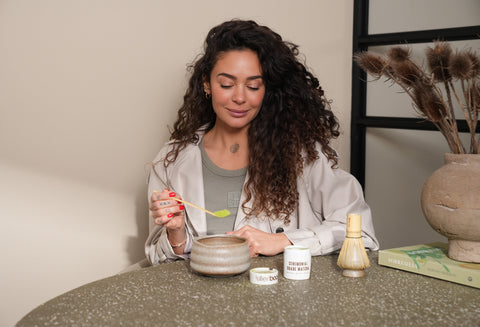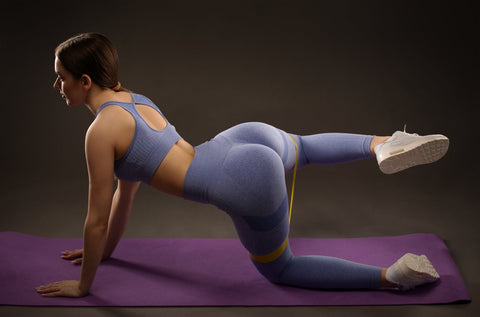Matcha is booming in everything from lattes to smoothies and even face creams. But let's be honest: not all green powders are created equal. If you're drinking matcha for your health, you want to know what you're buying and how to prepare it.
In this blog you will read:
-
Why matcha is so good for you
-
What is the difference between good and bad matcha
-
How to recognize it as a layman
-
And how to prepare it properly
🍵 What exactly is matcha?
Matcha is a superfine powder of green tea leaves, derived from the Camellia sinensis plant. Unlike regular green tea, you drink the entire leaf with matcha. And that makes a big difference: you get significantly more antioxidants, amino acids, chlorophyll, and caffeine .
✅ Matcha: this is what it does for your body
-
Increases fat burning
Thanks to the combination of EGCG (a powerful antioxidant) and caffeine, matcha boosts your metabolism . You burn more calories, even at rest. -
Promotes focus and calmness at the same time
Unique to matcha is the amino acid L-theanine , which promotes calmness and focus. Combined with the mild caffeine, you'll experience a sense of calm alertness —without the coffee-like slump. -
Supports your immune system
Matcha contains many antioxidants that help protect your cells from stress, aging and inflammation. -
Helps detoxify
Due to the high concentration of chlorophyll (the green plant pigment), matcha acts as a natural cleanser for your liver and blood.
⚠️ Not all matcha is created equal
Many matchas in the supermarket are inexpensive, but often bitter, yellow-green in color, or simply ground green tea. And you don't want that. You can recognize real matcha by:
🔹 The Pick
The very best matcha is made from the first flush (ichibancha) : young, tender leaves hand-picked in spring. These contain the most active ingredients and have the mildest flavor.
Later pickings (2nd or 3rd harvest) are coarser, more bitter and contain fewer nutrients.
🔹 Shade cultivation
True matcha is shaded for 20–30 days before harvest . This increases the content of:
-
L-theanine (for calmness and focus)
-
Chlorophyll (for detox)
-
And you get that deep green color and creamy umami flavor
🔹 Origin
Top matcha almost always comes from Japan , especially from:
-
Uji (Kyoto region) is the world's birthplace of premium matcha
-
Nishio
-
Yame
Matcha without a label of origin or from China is often unreliable or contaminated.
🔹 Color, taste and texture
-
Color : Must be bright, emerald green
-
Taste : soft, creamy, slightly sweet (not bitter or astringent)
-
Texture : ultra-fine, almost silky
🔹 Price
Good matcha costs more (usually €25–€40 per 30 grams), but then you get an active product .
🍶 How do you prepare matcha properly?
Brewing matcha is a ritual, and that contributes to its calming effect. Here's how to make it:
👉 What do you need:
-
1/2 to 1 teaspoon matcha
-
Hot water (but not boiling – approx. 70-80°C)
-
A bamboo whisk (chasen) or small whisk
-
A small bowl or glass
👉 Here's how to make it:
-
Strain the matcha into a bowl (to avoid lumps).
-
Add a little warm water and beat vigorously using a M or W motion until you have a frothy paste.
-
Then slowly add more water (approx. 60-100 ml) and continue whisking until a foamy layer forms.
-
Ready? Drink it right away – preferably at a quiet moment.
You can also use matcha in:
-
Matcha lattes (with warm almond or oat milk)
-
Smoothies
-
Oatmeal
-
Healthy pastries
🟢 Our pick: first harvest matcha from Uji
When you choose matcha, choose quality that works . That's why at Killerbody we offer a matcha that meets all your requirements:
✅ First pick (ichibancha)
Shade grown
✅ Originating from Uji, Japan
✅ Ceremonial quality
✅ Bright green, soft, pure and effective
Whether you drink matcha for energy, fat burning, focus, or a moment of peace for yourself, with our matcha you can be sure you're getting the right things.
👉 Curious about our first-pick matcha from Uji?
Check it out in the Killerbody shop and experience the difference for yourself.




